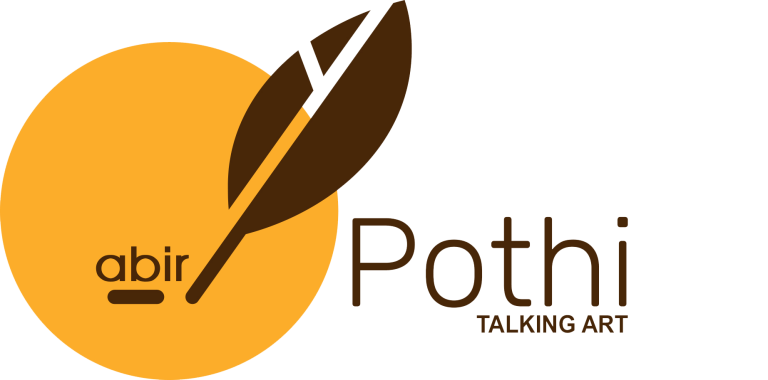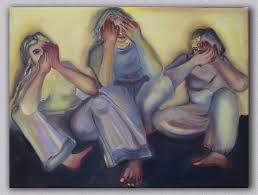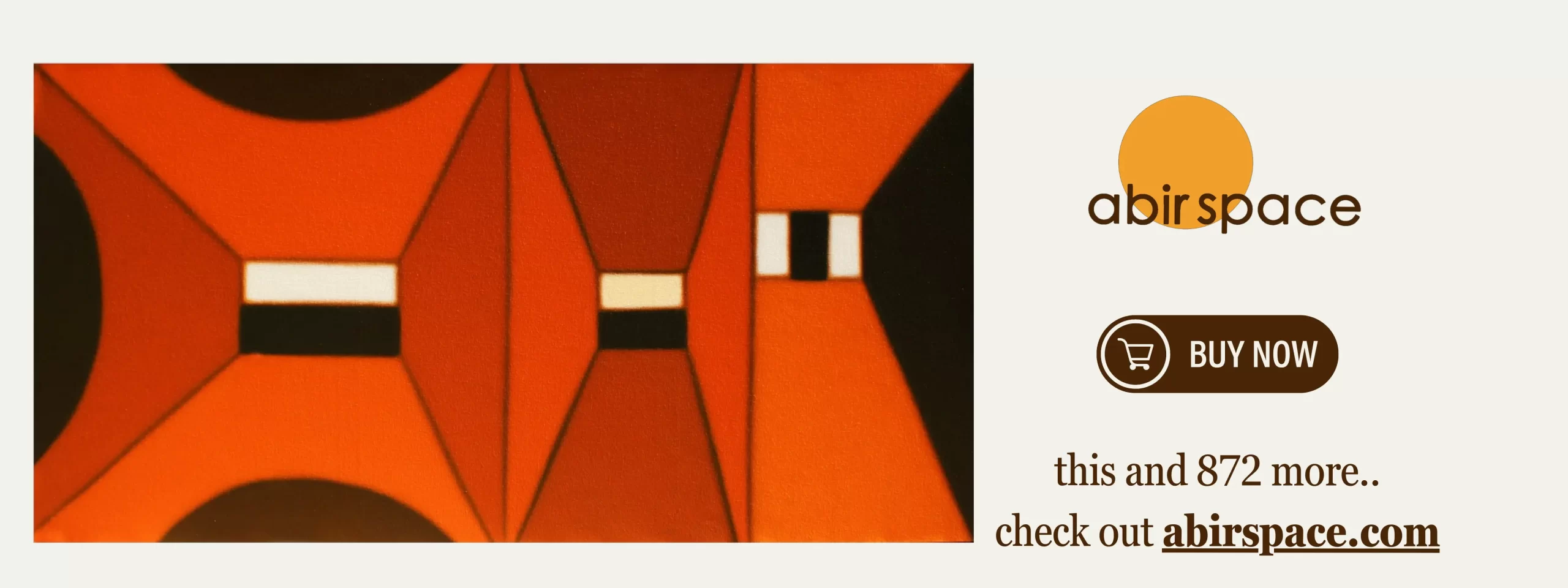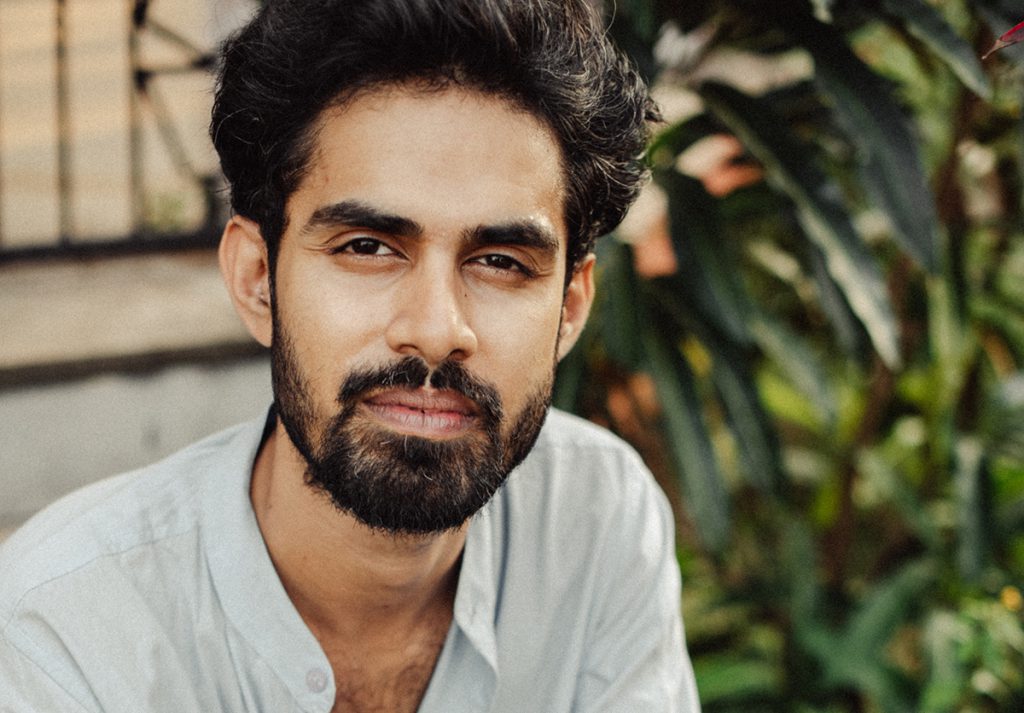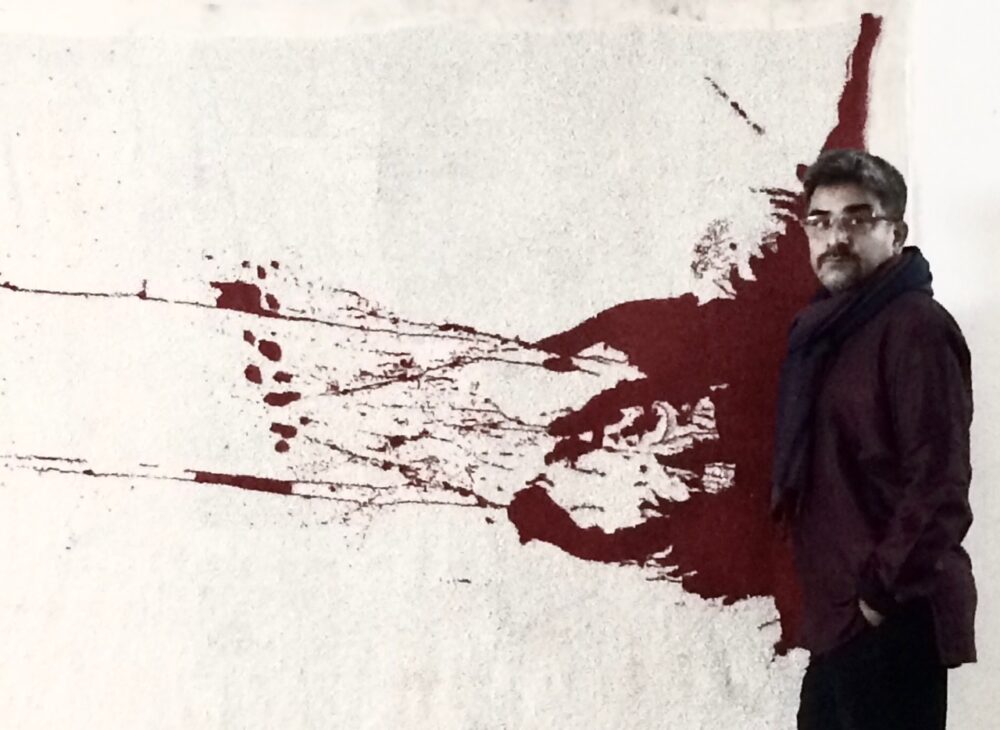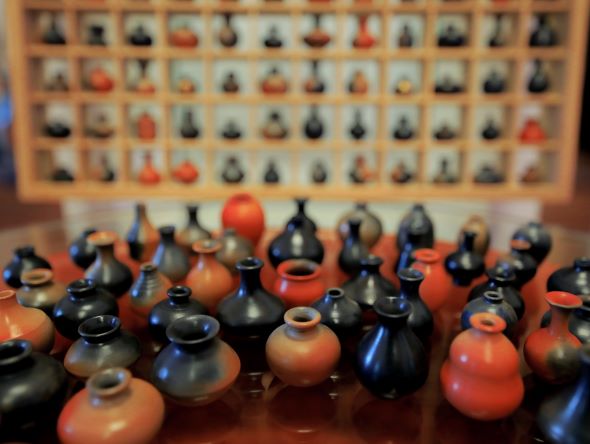Can you brief us on what your artistic practice is all about?
So, I am primarily a painter. But I also work a lot with drawing, and I work with oil on canvas, also watercolor on paper. And my main point of engagement is, how I can render the feminine and the various languages in which I can do that. So, the most recognizable or the most, sort of comfortable approach for me is to use figuration, but I’ve also, recently started to think about how the feminine can be rendered in abstract forms as well. And, I tend to create my figures with a sense of heaviness, a sense of woundedness, awkwardness, because I think I’m trying to create a parallel between, femininity and this orderliness. I think I like to kind of introduce these ruptures and these imperfect elements to speak towards that notion.
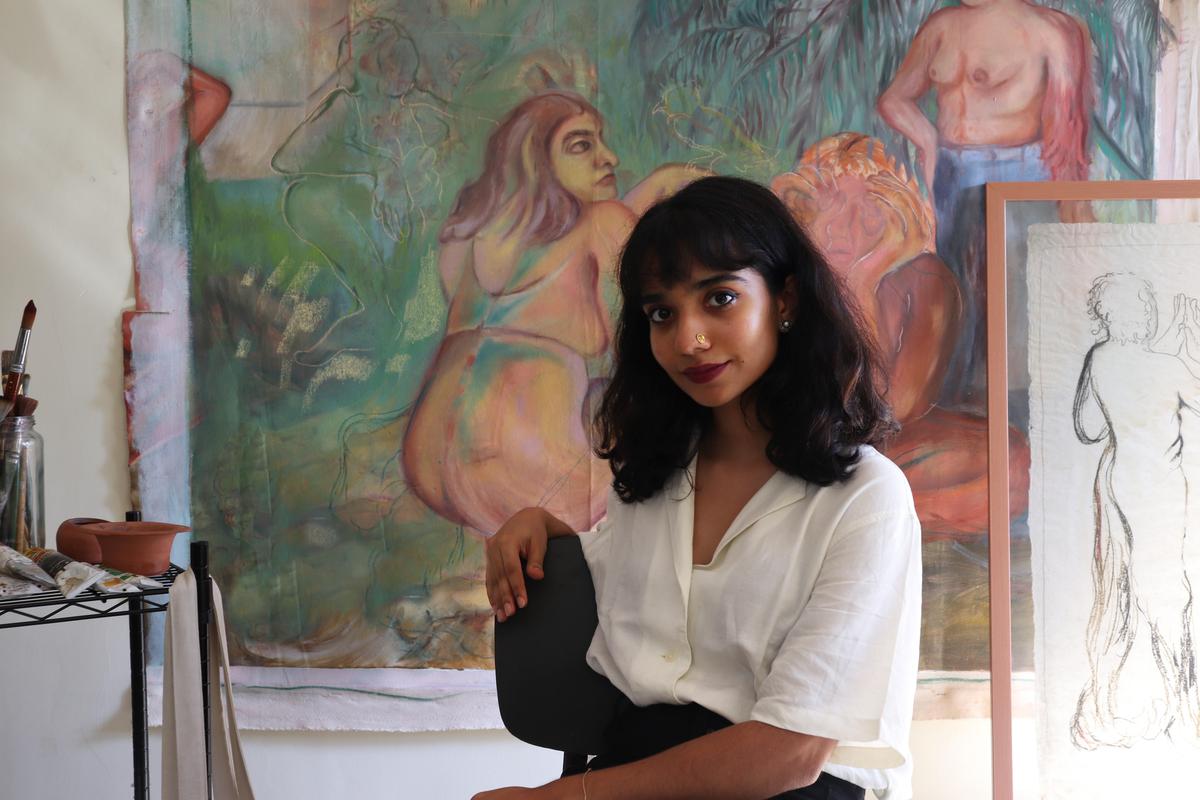
What drew you to visual art? Was there a moment or an influence?
I don’t think there was a specific moment. I would say I have a very clichéd story when it comes to my relationship with art. I mean, I was always drawing and painting as a kid, and it’s something that I just kind of stuck to for a very long time. And I kept doing it, until now, basically, thankfully, I had a very good, supportive circle of family and friends. I think that is needed in art. Otherwise it can feel quite lonely. It was really good to have them encourage me and support me and, help me, get a formal education in the arts as well.
What are you creating right now? Any piece that’s consuming your thoughts lately?
I’m currently well, I just had a solo. And after that, I decided to take a little break to refill myself. I really feel like I poured myself out on that solo. So, recently, starting to now think of another body of work, also paintings and, thinking about, the idea of water and, water based terrains such as caves, more specifically grottoes, because I feel like there’s such an interesting history there, the relationship with the word grotesque and, how they refer to this eerie, unknown, wondrous sort of presence of, creatures and, trying to kind of create a relationship with that to the decidedly feminine language. And, you know, if I can sort of create something that the world where, these notions meet together. So still very much resolving these thoughts. But that’s something I’m working on. Another thing that I’ve been thinking about is metal casting. So that’s something I recently tried out and was very excited by it. And I really want to continue that. So I just started with sand casted brass, and now I want to move into wax casting. So, using it to create frames for the walls that I’m building and how I can use it to study industrial domestic material like brass to create something completely organic and abstract. That’s something that really interests me, who I am.
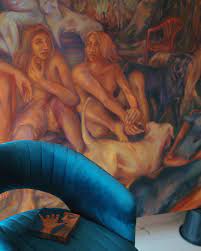
How do you connect with different mediums now that you started working with brass? How’s it going and how is that transition for you?
I think it’s less of a transition, I would say. And more of an addition. So, I’m still very much with my oils on canvas and my watercolors and my drawings, and, this is just a sort of added language that is helping me communicate better, you know? And it’s always nice to have that. It’s always nice as an artist to exploit that, it’s easy not to limit yourself to one medium, but instead to open up that box and to see what other tools are at your disposal. So definitely very excited. And it’s interesting how they feed into each other. I mean, the way the brass molds itself is really feeding into my language in drawing as well. And it’s interesting to see that something like metal, which is perceived as so rigid and strong that, you know, is actually very malleable and it melts as well. And it takes the form that you use for it, too. So it’s an interesting conversation between the two materials.
What inspires you in your visual journey?
I think, lately, it’s become very clear to me that all things non-human really inspire me. And I think what inspires me about that is that it makes me reflect on how much more of our environments exist inside of us that we are aware of. We think of ourselves as these separate entities from our ecologies of surroundings, but actually we are literally made of them.
And, this idea of embodiment is so interesting to me. And in, within the idea of femininity because, it makes you think of how the feminine is also exploited in the same way as the ecologies around us. and both, modes of gestation, both are world building mechanisms, like whether it’s the creative bubble or whether it’s, the feminine in terms of, reproduction, whether it’s the feminine in terms of the sheer idea of creation, like, all of these ideas very much exist in nature as much as they exist within the female body. And, so these are the things that really compel me and, I actively look for, you know, readings on stuff like this. So, for example, right now, a really good friend of mine suggested reading to me about hydro feminism, where, you know, this writer is comparing the water cycle in the environment to the water cycle of the body. And things like this. And so I guess even like animals and, you know, for example, the mangrove plant and how it reproduces is very similar to how human beings reproduce or that they are like, read underneath their bark and things which these sort of extreme relationships between human and non-human, really inspire me.
How do you want viewers to look at your art?
I think, especially when there’s a figure involved, it gets a little bit easier to communicate an action forward. So, you know, if it’s an act of sitting alone and looking at your own hands or if it’s an act of helping someone up a wall or an act of taking a walk. I mean, these are things that we all resonate with. So I think as long as, you know, viewers can take a moment to register the importance of these aspects of death, I think that’s enough for me. I don’t need them to. You don’t understand the whole narrative or understand the whole, thought about, the amount of time I spent and, you know, creating whatever I did. I think it’s really just about paying attention. And, I mean, I do believe my paintings are called to pay attention and, call to slow down and, really look. So if that’s done, then I feel like I’ve communicated, what? I’ve successfully expressed whatever I need to do.
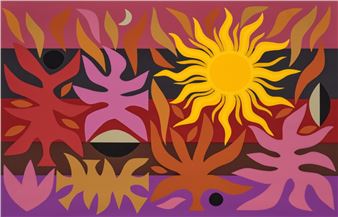
Has your relationship with art changed or evolved over the years?
That’s a really good question. And, of course, it has.
I think you are an artist yourself. So you know how, your relationship to art and your art both remain ever evolving? And, for me as well, it’s not just about the practice in isolation, but rather thinking about the practice as something that very much exists as part of your life. I think, initially I would, I think of my painting practice as something. Okay, it’s in the studio. This is what I do. And, you don’t have to give it any. Might be able to have you refined this of it, etc.. But now I see it, very much integrated as part of my life. And I feel, you know, if I’m talking about a relationship to the non-human, as accountable and responsible to honor the non-human in my real life. So, whether I think about animals or, you know, how I spend time with nature, with more care and, with more attention and less as something that exists. I mean I said this before, let’s say something that exists at a boundary with me, but something that is way more permeable. And all of this is, thanks to the fact that I have been working, in my practice, on the same issues, and they both feed into each other. So I think I would say that, I’ve allowed my practice to be more permeable with my lines, and that’s how my relationship has evolved and is in the direction of evolving. I mean, that’s an aspiration. It’s still in negotiation with something like that.
What does your creative process look like? Are there any rituals you like to follow or something like that while doing your work or in your art practice?
Yeah, I think, I think rituals is like the perfect word because I feel I’m a counter to the chaotic artist. The thought of all over the place, I’ve actually, really, really organized it. I really like to be on time at the studio. For my workstation to be completely clean. And, certainly there are days where I have, like, full on plans about how I’m going to spend my time. So, but I very much treat it as a ritual. And, with the same sort of, sometimes even ceremonial behavior towards my practice, where what I’m about to start, a new painting, I’ll have, like, certain things that I do, even if it’s like putting on that perfect song or, you know, putting my phone in the other room and, you know, small things that get me a little bit, more, in in the flow in the zone. But, other than the studio, I feel like there are so many things that contribute to the process. For example, right now I was talking about taking a pause and taking a break, and I really have, that’s something that goes back to how my relationship with art has evolved. I really feel it’s so important to have that break to not make and do not create for some time and, to really let the world seep into you and, to allow for a new ideas to come in and whether that’s out of boredom or if it’s just out of being idle, you know, so, the process is, really going in that rhythm, like giving six months of crazy studio time and then taking a few months off and then going into it again. But the few months off are as well, not really a few months off because the after, writing about it or you’re still you gotta be looking at, and it’s just so much more liberating than thinking of yourself as this entity that must exist in a certain format. So, yes, I think the process is becoming more fluid as time goes by.
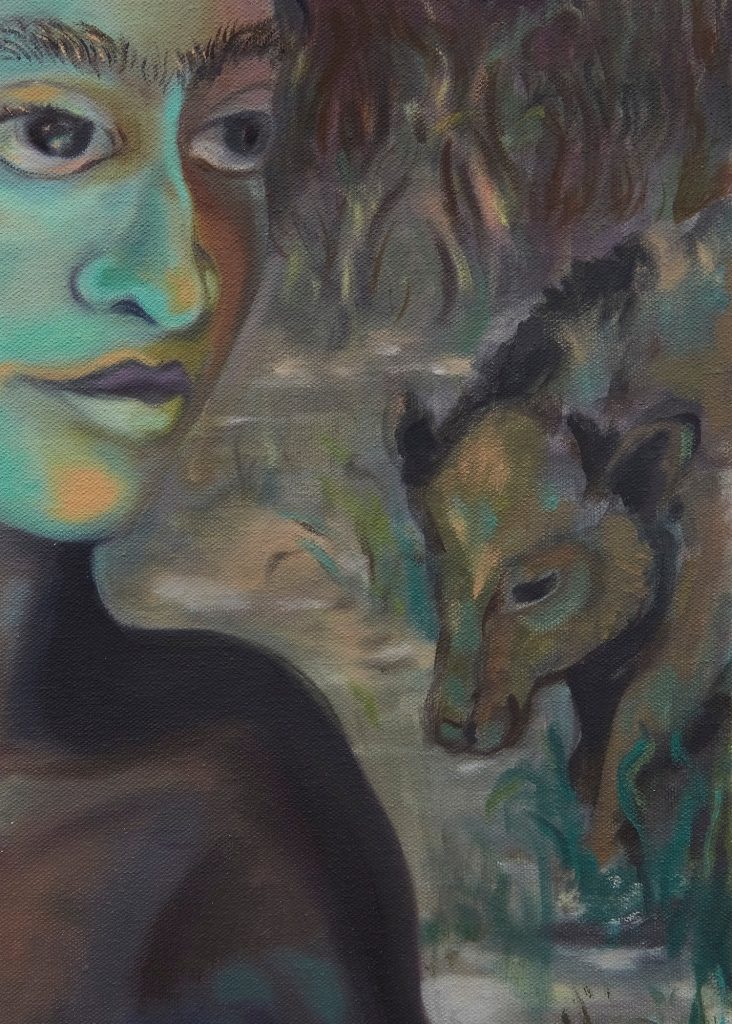
What is one piece of advice you would offer to young artists that are just starting out in the visual art space?
I think I would say, really hold close to your peers and if you are lucky enough to have a mentor. I really feel that community is so important. And peer to peer review more than anything else is really, really, precious. And that’s something that when I was in college, I enjoyed a lot. And then once I was out of it, it suddenly disappeared because that’s something I had to seek out. It didn’t exist for me. Naturally. So, I would say that just have those around, the people who are just someone who you can have a very honest conversation with about your art. Otherwise, you’re just creating a bubble. It’s important to have relevant to resonant conversations, right? especially with fellow creatives. I would say these are the people who will probably help you navigate the mysterious, sometimes very choppy art world and the commercial parts of it. So, every time these people around me keep me sane, I think that would be another one.
Which artist’s work usually inspires you? Whether it is the master or a peer or someone totally out of the art world?
I know I definitely have some artists that have been inspiring me for a very long time now. And, if you talk about Masters, I would say, William Kupcho is definitely one. I mean, he was a pioneer in so many ways, you know, depicting queer relationships and creating a sort of figuration, truly, of his own. So, he’s been sort of solid, constant, other than that, there’s artists like Suzanne Joseph again, whose figuration is so beautiful. Marlene Dumas again, for her use of mediums, especially watercolors. And, Michael Armitage, who’s a London based artist and Sakshi Gupta, she works a lot with metal. So she’s turned out to be like an inspiration as I’ve started to venture into metal. And then there are some performance artists as well. It’s a mix.
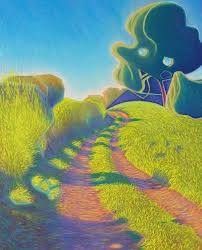
What keeps you busy when you’re not creating? When you’re not at the studio, what else do you like to do?
Well, given the fact that I’m really trying to integrate everything right now, things are really falling into all categories. But I think, what would keep me busy is probably spending time with friends and family and spending as much as I can with dogs and cats as well. Any kind of, venturing out into the wild. So even if it’s a long trek or a walk or traveling, it’s just as much as I can interact with nature. It is sort of where I’m at right now. And, this is, again, something I just don’t consider outside of the practice. I very much consider it part of it. And there’s so much to learn from nature.
Thank you so much for giving such an insightful interview but it was a great interview. Thank you so much.
Featuring Image Courtesy: Saatchi Art
To watch the full interview head to our YouTube Channel Art with Abir
Contributor
